Servo Driver
-
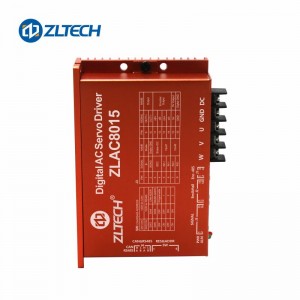
ZLAC8015 ZLTECH 24V-48V DC 30A CANOpen RS485 wheel servo driver motor controller for robot
ZLAC8015 is a high-performance digital servo driver for hub servo motor. It has a simple structure and high integration, and adds bus communication and single-axis controller function
-
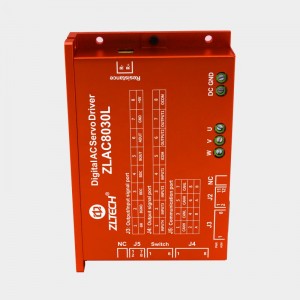
ZLTECH 24V-48V DC 30A CAN RS485 servo motor controller driver for CNC machine
Servo driver is an important part of modern motion control and is widely used in automation equipment, such as industrial robots and CNC machining centers. Servo driving technology, as one of the key technologies for the control of CNC machine tools, industrial robots and other industrial machinery, has received extensive attention in recent years.
The servo driver uses a digital signal processor (DSP) as the control core, which could realize more complex control algorithms, and realize digitization, networking and intelligence. At the same time, it has fault detection and protection circuits including overvoltage, overcurrent, overheating, undervoltage, and etc.
The servo driver control is divided into position loop, velocity loop and current loop according to its control object from outside to inside. Correspondingly the servo driver can also support position control mode, velocity control mode and torque control mode. The driver control mode can be given in four ways: 1. Analog quantity setting, 2. Internal setting of parameter setting, 3. Pulse + direction setting, 4. Communication setting.
The application of internal setting of parameter setting is relatively few, and it is limited and step-adjusted.
The advantage of using the analog quantity setting is fast response. It is used in many high-precision and high-response occasions. Its disadvantage is that there is zero drift, which brings difficulties to debugging. European and American servo systems mostly use this method.
Pulse control is compatible with common signal methods: CW/CCW (positive and negative pulse), pulse/direction, A/B phase signal. Its disadvantage is low response. Japanese and Chinese servo systems mostly use this method.
Communication setting is currently the most commonly used control method. Its advantages are rapid setting, fast response, and reasonable motion planning. The common mode of communication setting is bus communication, which makes the wiring simple, and the diversified communication protocol also gives customers more choices.
ZLAC8030 is a high-power and low-voltage digital servo driver independently developed by themselves. Its system has a simple structure and high integration. It adds bus communication and single-axis controller functions. It is mainly matched with 500W-1000W servo motors.
-
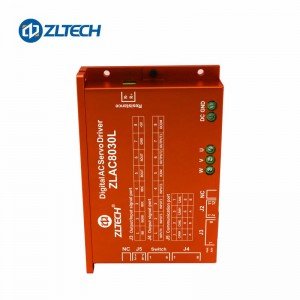
ZLAC8030L ZLTECH 20V-60V 60A CANOPEN RS485 DC servo motor controller driver for robot AGV
ZLAC8030L is a high-performance digital servo driver for hub servo motor. It has a simple structure and high integration, and adds RS485, CAN bus communication and single-axis controller function.
-
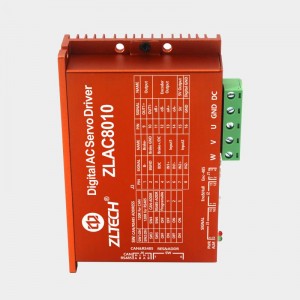
ZLTECH 24V-48V DC 30A CAN RS485 servo motor controller driver for CNC machine
Servo driver, also known as “servo controller” and “servo amplifier”, is a controller used to control the servo motor. Its function is similar to that of a frequency converter acting on an ordinary AC motor. It is a part of the servo system and is mainly used in high-precision positioning systems. Generally, the servo motor is controlled by three methods of position, speed and torque to achieve high-precision positioning of the transmission system. It is currently a high-end product of transmission technology.
1. Requirements for the servo drive to the system.
(1) Wide range of speed regulation;
(2) High positioning accuracy;
(3) Sufficient transmission rigidity and high stability of speed ;
(4) Quick response, no overshoot.
(5) High torque at low speed, strong overload capacity.
(6) High reliability
2. The servo driver requirements to the motor.
(1) The motor can run smoothly from the lowest speed to the highest speed, and the torque fluctuation should be small. Especially at low speed such as 0.1r/min or lower speed, there is still a stable speed without creeping phenomenon.
(2) The motor should have a large overload capacity for a long time, to meet the requirements of low speed and high torque. Generally, DC servo motors are required to be overloaded 4 to 6 times within a few minutes without damage.
(3) In order to meet the requirements of fast response, the motor should have a small moment of inertia and a large stall torque, and should have the smallest time constant and starting voltage as possible.
(4) The motor should be able to withstand frequent starting, braking and reversation.
Shenzhen Zhongling Technology Co., Ltd. is a company specializing in the production of in-wheel motors, in-wheel motor drivers, two-phase stepper motors, AC servo motors, two-phase servo motors, servo motor drivers, and stepper drivers. Products are mainly used in various types of CNC machine tools, medical machinery, packaging machinery, textile machinery and other automation control fields. The company has strong technical force and exquisite production technology. All motors are made of high-quality materials. The technical performance and quality indicators have reached the leading level of similar products in China. Shenzhen Zhongling Technology Co., Ltd. has always been based on the market with the business tenet of integrity and win-win.
-
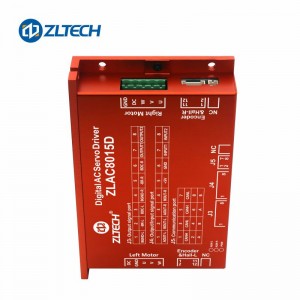
ZLTECH 24V-48V 30A Canbus Modbus dual channel DC driver for AGV
OUTLINE
ZLAC8015D is a high-performance digital servo driver for hub servo motor. It has a simple structure and high integration, and adds RS485 & CANOPEN bus communication and single-axis controller function.
FEATURES
1. Adopt CAN bus communication, support CiA301 and CiA402 sub-protocol of CANopen protocol, could mount up to 127 devices. CAN bus communication baud rate range 25-1000Kbps, default is 500Kbps.
2. Adopt RS485 bus communication, support modbus-RTU protocol, could mount up to 127 devices. RS485 bus communication baud rate range 9600-256000Bps, default is 115200bps.
3. Support operation modes such as position control, velocity control and torque control.
4. User can control the start and stop of the motor through bus communication and query the real-time status of the motor.
5. Input voltage: 24V-48VDC.
6. 2 isolated signal input ports, programmable, implement the driver’s functions such as enable, start stop, emergency stop and limit.
7. With protect function such as over-voltage, over-current.





